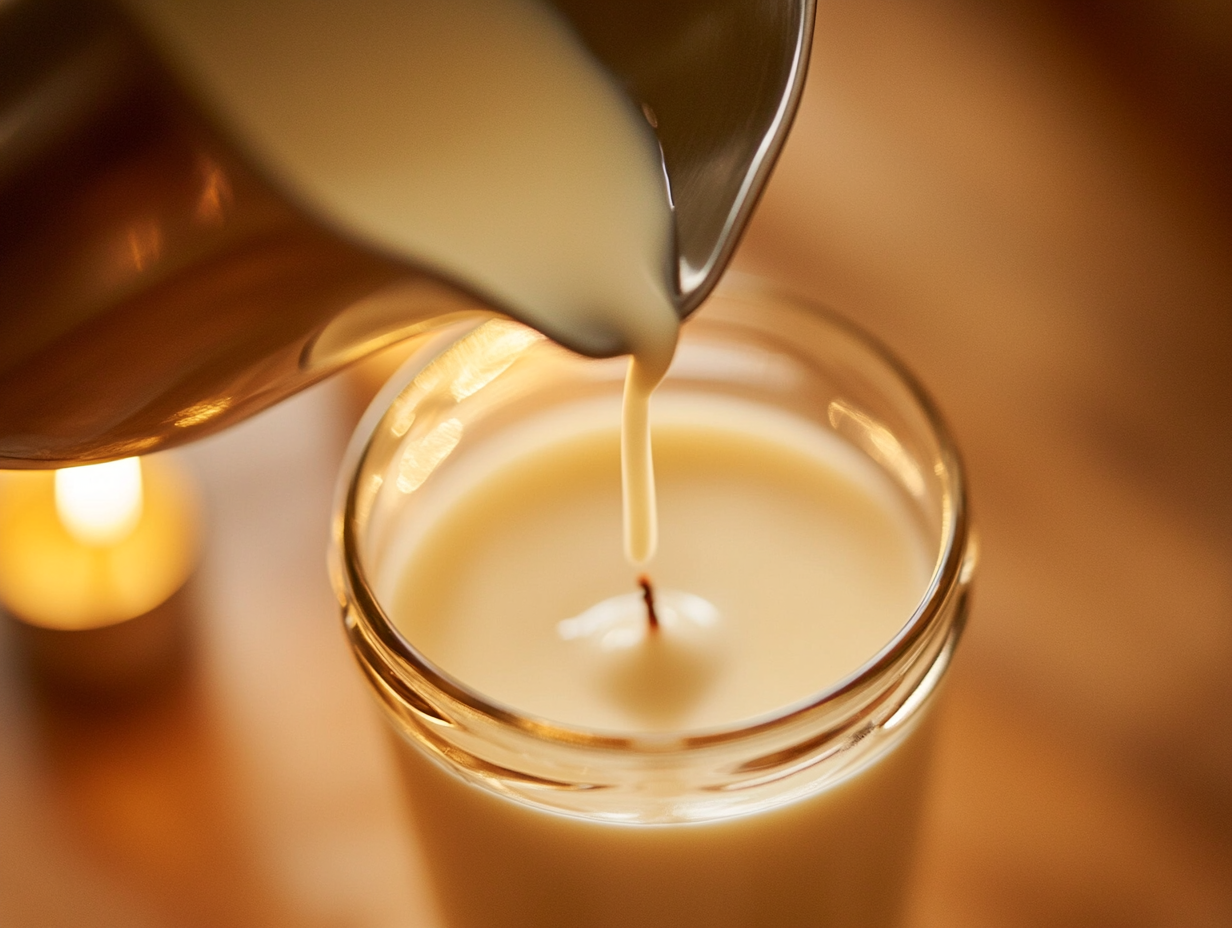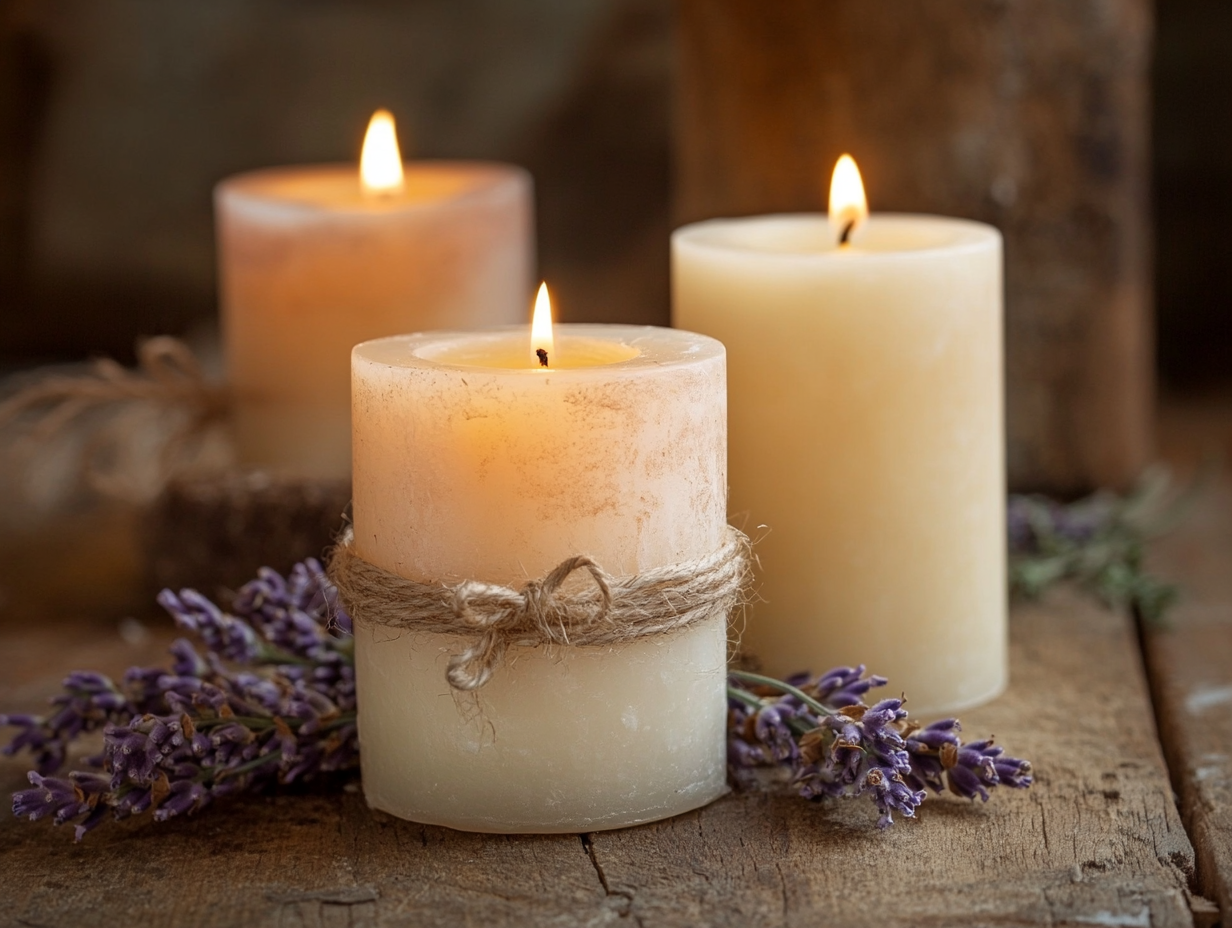How to Make Candles at Home: A Beginner's Guide
Ready to make your own beautiful candles? Our beginner's guide walks you through every step, from choosing your wax and wicks to adding scents and creative decorations.

How to Make Candles at Home: A Beginner's Guide
Welcome to the world of candle making! Learn the details and tips for creating your own beautiful candles. Find out what materials you'll need and the key steps to get started right away.
What You'll Need for Homemade Candles
To make candles at home, you'll need some basic materials. If you're wondering how to get started, you'll find some essential tips below. The wax you choose is the main component of these decorative items.
Beeswax is a traditional and popular option. If you prefer a more natural and eco-friendly choice, soy wax is an excellent alternative. Once you've gathered your candle-making materials, you can let your imagination run wild and create a variety of designs.
You may also need additional materials like wicks, molds, or decorations. Wicks are essential as they allow the candle to burn and come in different lengths and thicknesses. Candle molds are available in various shapes and sizes, giving you the freedom to create unique designs.
Decorations are the perfect way to personalize your candles and add a decorative touch. These can include options like dried flowers, casting resin, or glitter.
The Basic Steps: The Homemade Candle-Making Process

The process of making candles at home involves a few fundamental steps. If you're wondering how to do it, just follow along. First, begin by properly melting your wax blocks. Next, prepare the wick. The wick is cut to the size of your candle and placed in the center of your design. Once it's positioned correctly, it's secured to ensure it stands straight.
At this stage, you'll prepare your mold, if you're using one. The mold is carefully filled with the melted wax. It's a good idea to leave a little space at the top to add decorations later. Before pouring, allow the melted wax to cool slightly, then carefully pour it into the mold.
The wick must be held securely in the center while the wax hardens. While the candle is still warm, you can add optional decorations. By following these steps, you can easily make your own candles at home and display them in beautiful candle holders to create a wonderful atmosphere in your living space.
A Look at Different Waxes Beeswax, soy wax, and paraffin are common materials used in candle making. Beeswax is a natural substance obtained from the wax glands of bees, making it an eco-friendly choice.
Soy wax is a vegetable-based material derived from soybeans, making it a popular vegan and environmentally friendly option. Paraffin is a petroleum derivative and is known as an industrial material.
While beeswax and soy wax tend to offer a cleaner, more natural burn, paraffin can provide a more intense flame but may have some environmental side effects. You can choose among these based on your preferences and priorities.
Making Scented Candles with Natural Essential Oils
Natural essential oils are components that add beautiful fragrances and therapeutic effects to homemade candles. You can mix natural essential oils with your melted wax during the scented candle-making process to achieve your desired aroma.
You can choose from common essential oils like lavender, peppermint, lemon, or orange. After pouring the wax and essential oil mixture into the molds and placing the wick, simply wait for it to harden.
How to Color Your Candles with Pigments and Natural Dyes
You can use pigments or natural dyes to color your candles. Pigments are used to achieve intense, vibrant colors and are mixed directly into the melted wax.
Natural dyes are organic compounds derived from plants or minerals. For this purpose, you can use substances like beetroot or coffee. Natural dyes provide softer, more subdued tones. To achieve your desired color intensity, start with a small amount and add more as needed.
Before you begin the coloring process, ensure that your melting pots and tools are clean and dry. It's important to be careful during the coloring process and to mix thoroughly. This way, you can add your desired colors and visual appeal to your homemade candles.
Decorative Touches: How to Garnish Your Candles

There are many options for decorating your candles. For decorative candles, you can use elements like dried flowers, seashells, wick charms, colored wax flakes, or dried leaves. These provide a natural look and add interesting colors and textures.
You can also decorate your homemade candles with colorful wax flakes, ribbons, or lace. These details add shine, visual appeal, and elegance. Tying a ribbon around the candle or using custom-designed labels also provides a lovely decorative touch.
Eco-Friendly Candle Making with Recycled Materials
Making candles with recycled and eco-friendly materials is an ideal option for those who embrace a sustainable approach. You can reduce waste by melting down old candle remnants or used wax pieces to create new products.
You can make a natural choice by using materials like organic or soy wax. This way, you can both reduce waste through recycling and create an eco-friendly product.
How to Make Custom and Themed Candles
You can follow a few steps to make custom and themed candles. Start by choosing a theme or design concept. You can then melt and color the appropriate wax for your theme.
Create your design using molds or special shaping techniques. Using various molds means you can make candles in many different shapes. You can complete your design by adding decorations and details according to your preference.
After adding these details, let the candles harden and cool. This allows you to create special products that are consistent with your own design and theme.
Tips and Tricks for Homemade Candle Making
It's important to consider some tips and tricks when making candles at home. Always prioritize safety measures. Before pouring hot wax, make sure your work surface is heat-resistant.
It is crucial that the wick is the correct length and is placed securely in the center of the mold or jar. Try not to touch the candles during the hardening process and give them enough time to set. This will allow the candle to burn evenly and smoothly. When coloring the wax, you can control the intensity by using different amounts of pigments or natural dyes.
When adding natural essential oils, be careful not to exceed the recommended amounts. By following all these tips, you can safely and successfully make candles at home.
Information on Using and Caring for Your Candles
Proper use and care of your homemade candles are important for a long-lasting and enjoyable experience. It is recommended to be careful when burning candles and to keep them under supervision. When lighting a candle, make sure there are no flammable materials around the flame.
A pre-made wick is typically about 1 cm longer than needed, and you can trim it if necessary. You may need to remove any decorations or coatings from the candle before lighting it.
It is recommended to keep the area around the burning candle clean and safe. Use it in a place inaccessible to children and pets. When the candle is not burning, you can use a lid to cover it and protect it from dust. By following these precautions for candle use and care, you can ensure a safe atmosphere.
Tags
Other Articles

3 Flawless Layouts and 5 Real-Life Studio Solutions
Wondering how to arrange furniture in your small apartment? Get 3 fail-proof layouts for narrow living rooms and 5 genius plans for studio apartments.

Studio Apartment Hack: 10 "Cloffice" & WFH Nook Ideas That Save Space
Need a home office in your studio apartment? Discover 10 clever ways to create a WFH nook, including amazing "cloffice" (closet office) hacks.

Best Space-Saving Gifts for Small Apartments?
Wondering what gifts to buy for someone in a small space? Our 2025 guide answers with 30 genius space-saving tech, storage, and furniture ideas.